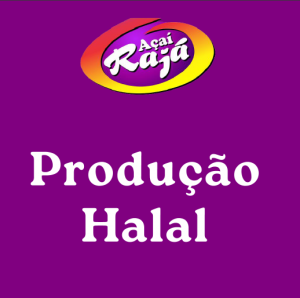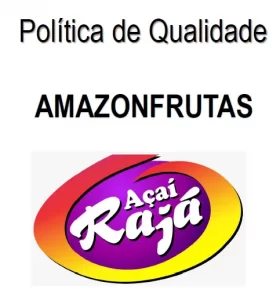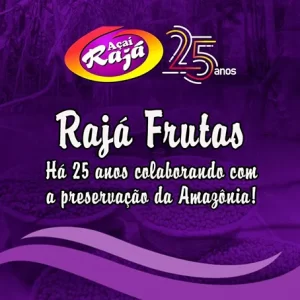/i.s3.glbimg.com/v1/AUTH_59edd422c0c84a879bd37670ae4f538a/internal_photos/bs/2021/4/O/s4EzZHTTu54qfHe20OGA/acaizal.jpg)
Production of açaí on dry land — Photo: Ronaldo Rosa/Embrapa/Disclosure
Embrapa Amazônia Oriental offers from Wednesday (29) in the virtual showcase e-Campo, the first course on the cultivation of the açaizeiro on terra firme. The course is free and is targeted at producers, rural assistance and extension agents and agricultural technicians from all over Brazil interested in the management of this culture that is increasingly popular in the country and the world.
With continuous offer, href='https://www.embrapa.br/e-campo?chamada-eventos' target='_blank' rel='noopener' registration opens Wednesday (29) at this link /a and interested parties can start at any time. The Virtual Learning Environment (VLE) of the Moodle platform is the place where the participant will have access to the contents and the interactive and evaluative activities of the course.
The content of the course “Management of açaí culture on dry land: from seed to post-harvest and processing” is divided into five modules, which are permanently available on the platform.
The general manager of Embrapa Amazônia Oriental Walkymário Lemos says that the first course on açaí is a milestone for the institution because it is a strategic fruit crop for the Amazon and for the country, as well as for Embrapa's portfolio of projects. "We have the opportunity to share reliable technical information with producers, entrepreneurs, decision makers and others interested in the cultivation of açaí, as well as the possibility to contribute to the expansion of this crop in the country," he said.
Full and current content
/i.s3.glbimg.com/v1/AUTH_59edd422c0c84a879bd37670ae4f538a/internal_photos/bs/2021/9/9/lvBoR5Q8Az444A2RUSsw/acai.jpg)
Online course will teach techniques for growing açaí trees on dry land — Photo: Ronaldo Rosa/Embrapa/Disclosure
The online and continuous modality of the course allows the participant to start and finish in his or her own time. But as explained by the agronomist Mazillene Borges, an analyst at Embrapa Amazônia Oriental and manager of the course, the recommendation is that the student finishes the training in 30 days, because it is enough time to attend the classes, take the assessments and keep the content up to date.
Os cinco módulos têm os seguintes temas:
- 1. Variedades, implantação e manejo do açaizal;
- 2. Nutrition and fertilization of the açaí tree;
- 3. Use of Irrigation technology focused on maximizing productivity and rationalizing water consumption in the cultivation of açaí on dry land;
- 4. Pollination, management and control of insect pests;
- 5. Harvest, Post Harvest, transport and processing of açaí.
The content involves recorded classes, supplementary video materials, booklets and handouts. And a specific channel for guidance and clarification of doubts by the specialists of Embrapa Amazônia Oriental. The certificate will be awarded to the participant who completes the assessment of the five modules with an average grade of 70 points and completes the final satisfaction assessment.
The analyst says that it is the most complete training in the virtual environment on the culture of açaí on dry land currently available. “We have a very high demand for information about the açaí culture, which is booming. So this course seeks to encourage and guide producers, and train labor in rural areas about this culture,” she said.
expanding market
According to the Brazilian Institute of Geography and Statistics (IBGE), Brazil produced 1 million and 700 thousand tons of açaí fruits in 2020, from both the planting and management of native areas. The planted area of this fruit in the country is about 220 thousand hectares, with 96% of this total in the state of Pará, which is the largest national producer with just over 1 million and 500 thousand tons in 2020.
Agronomist João Tomé de Farias Neto, a researcher at Embrapa Amazônia Oriental, emphasizes that the production of açaí on dry land is an alternative to increase the supply of fruit to the market. “This supply grows annually around 5%, on the other hand the demand grows more than 15%. There is a lack of açaí in the market,” he said.
In addition, he points out that with irrigation and cultivars recommended by the research, fruit production also takes place in the off-season, when the producer is able to obtain highly rewarding values. “I recommend the cultivation of açaí to any producer who is interested in this culture. It is an excellent opportunity to earn income”, highlights the specialist.
Good deal to the producer
/i.s3.glbimg.com/v1/AUTH_59edd422c0c84a879bd37670ae4f538a/internal_photos/bs/2021/0/0/QJPIq2QAKDVl6OhZMoiA/acai1.jpg)
Variety BRS Pai d’Égua, developed by Embrapa, has excellent quality and productivity — Photo: Ronaldo Rosa/Embrapa/Disclosure
Who guarantees that açaí is a good deal is producer Valdemir Cardoso, from the municipality of Vigia de Nazaré, near Belém, capital of Pará. He points out that the advantages of this production are numerous and guarantees “planting açaí is one of the best businesses we have at the moment in Brazilian agriculture”.
The producer emphasizes that it is not necessary to have a large area for this crop, which makes it easier to control production in the general context of the property. In addition, the variety available on the market – BRS Pai d’Égua, developed by Embrapa – has excellent quality and productivity. And also, adds the producer, the world discovered açaí and its physical-chemical qualities. “So it's a perfect equation: a good product with a good demand allows you to have excellent results”, he concluded.
The course is free and its target audience is producers, assistance and rural extension agents and agricultural technicians.






